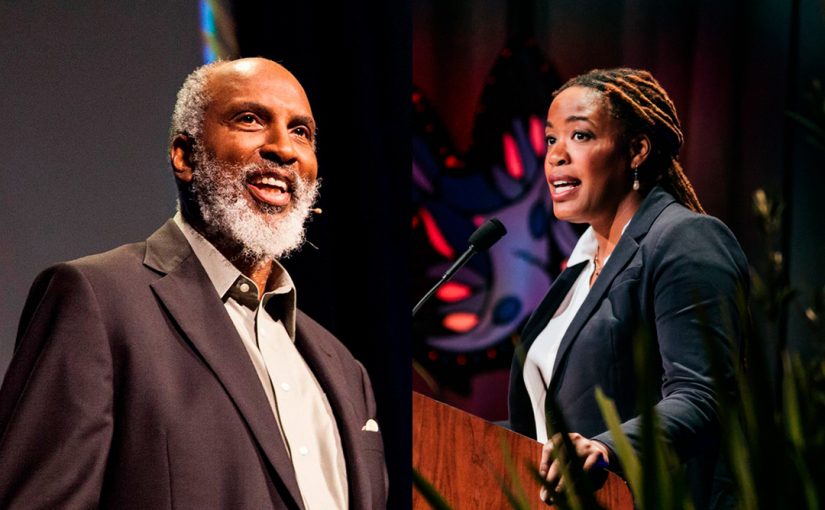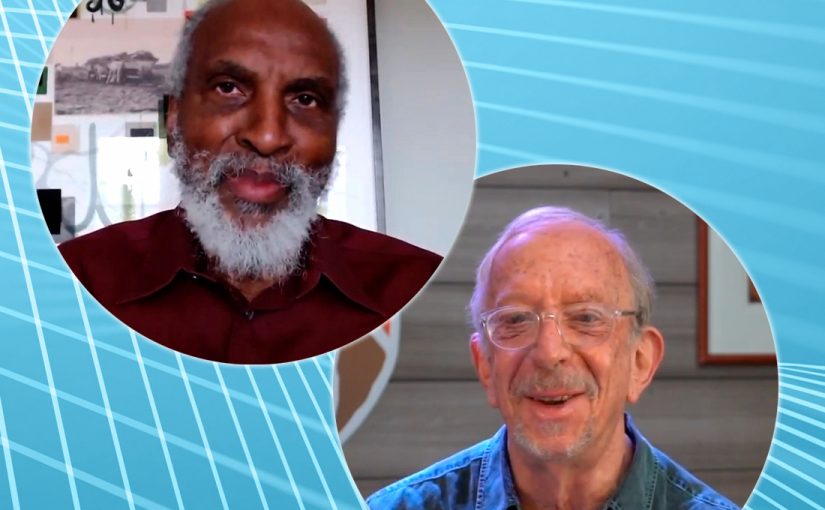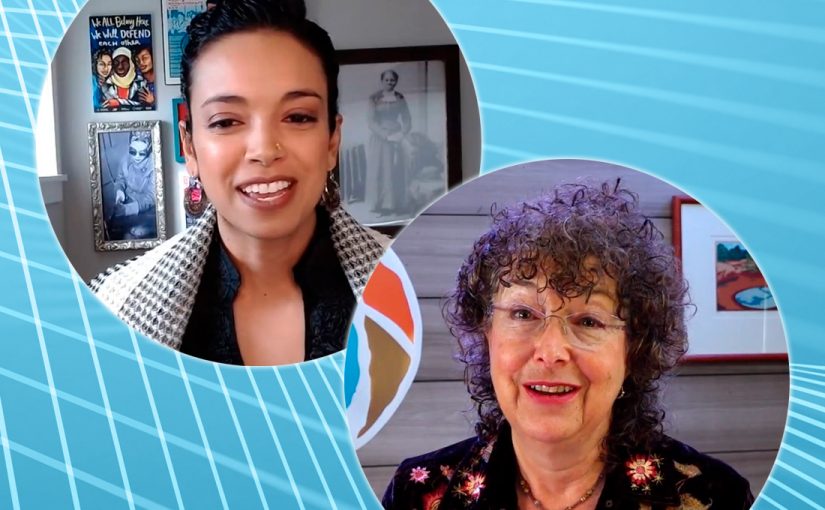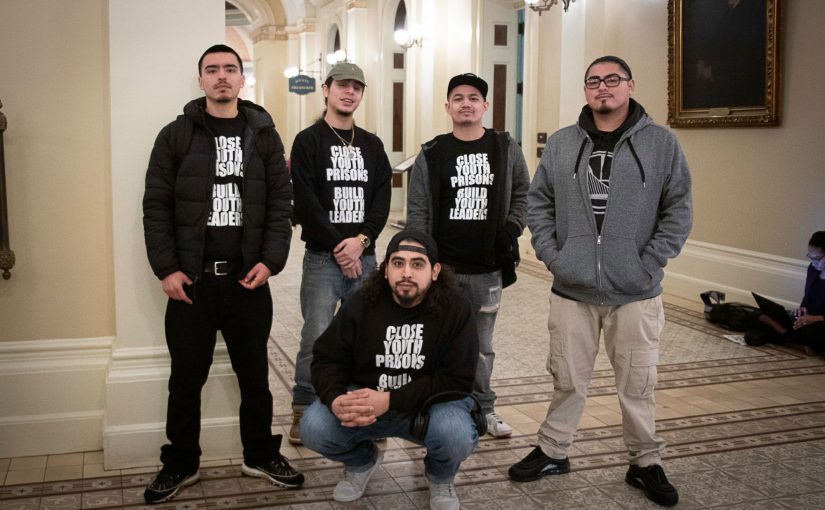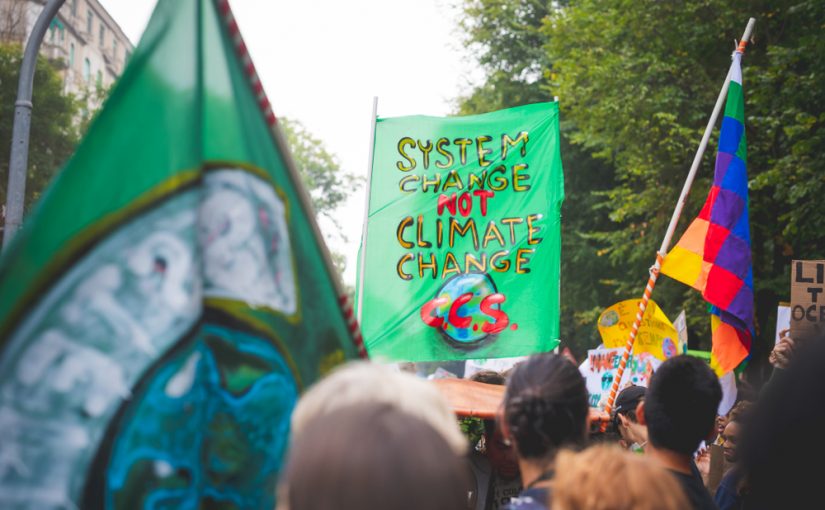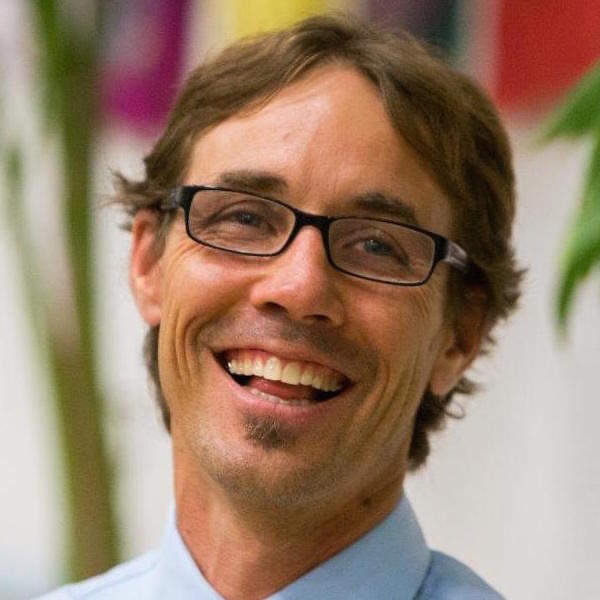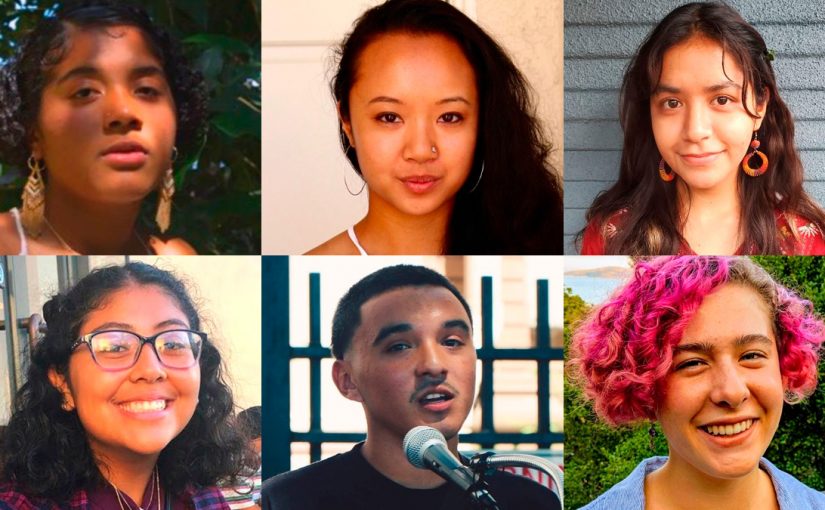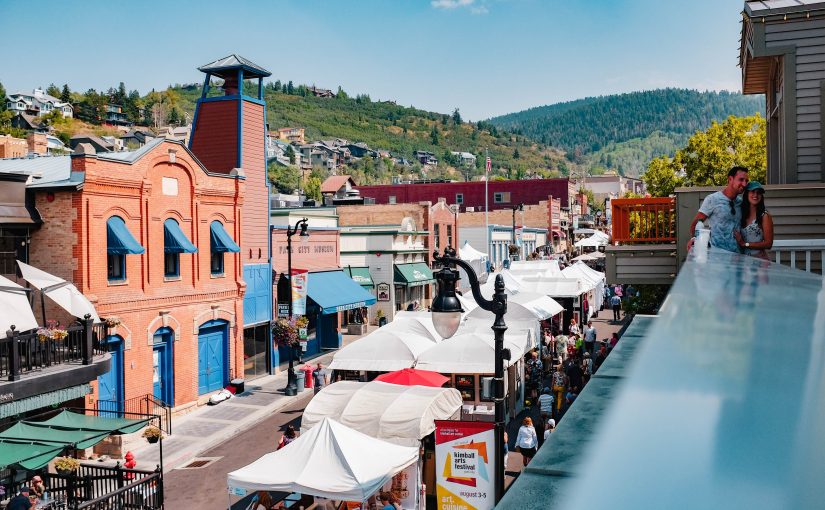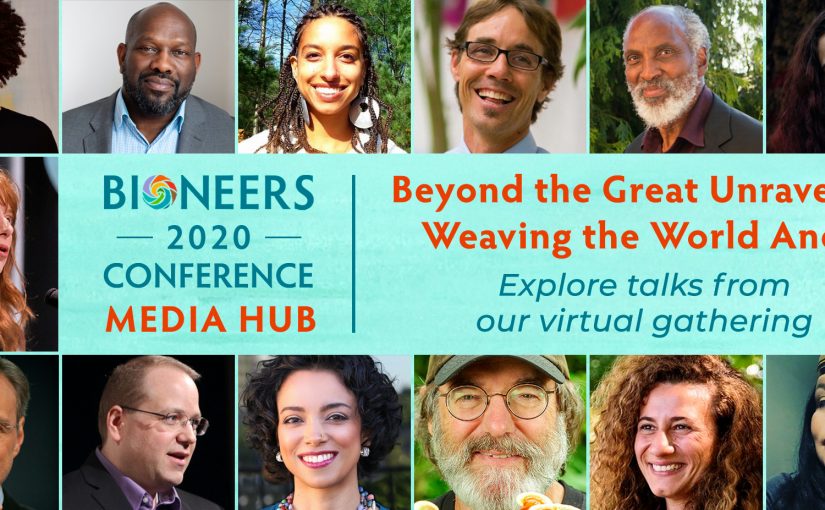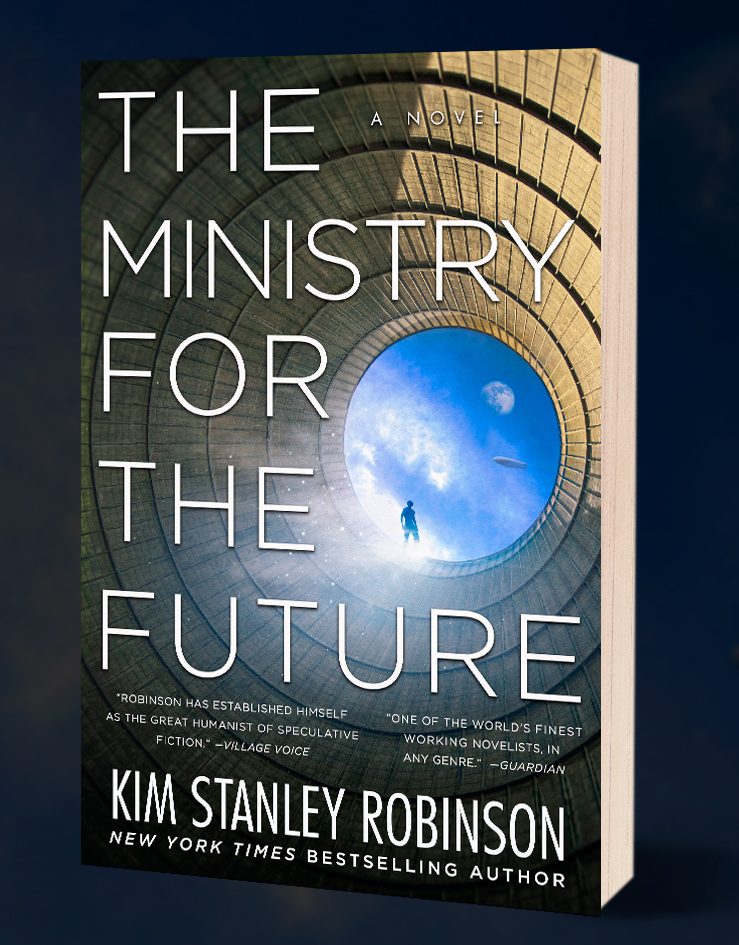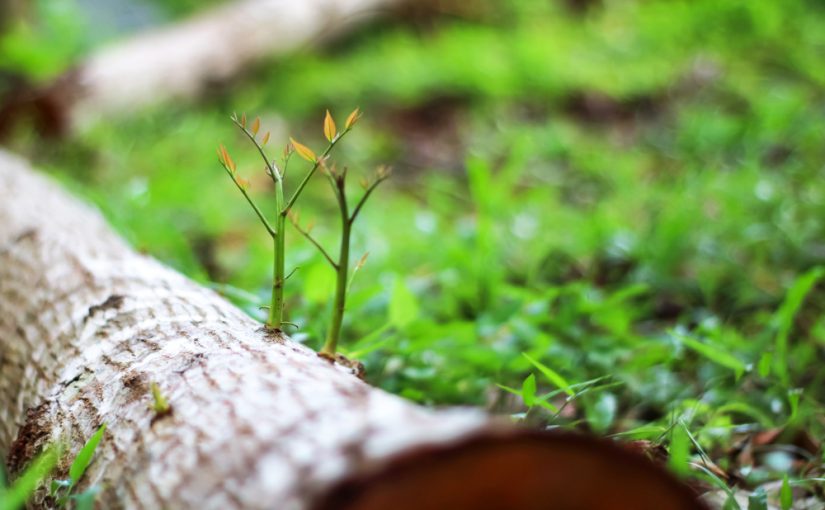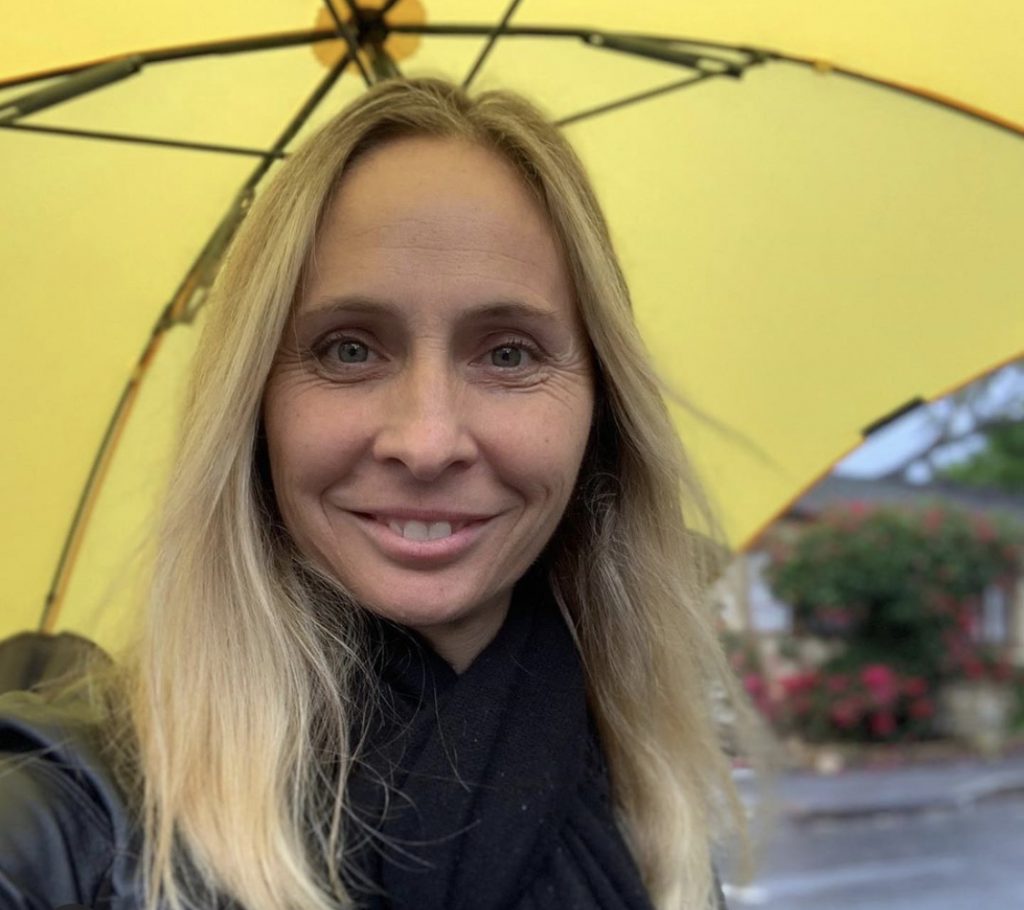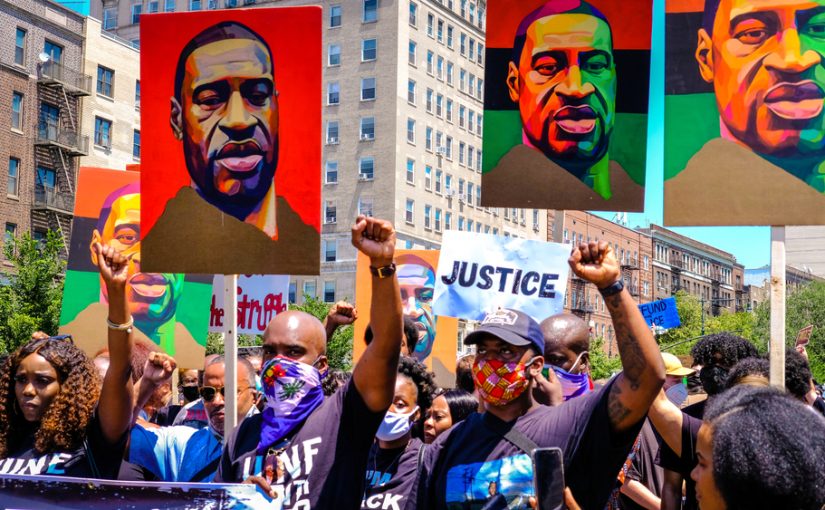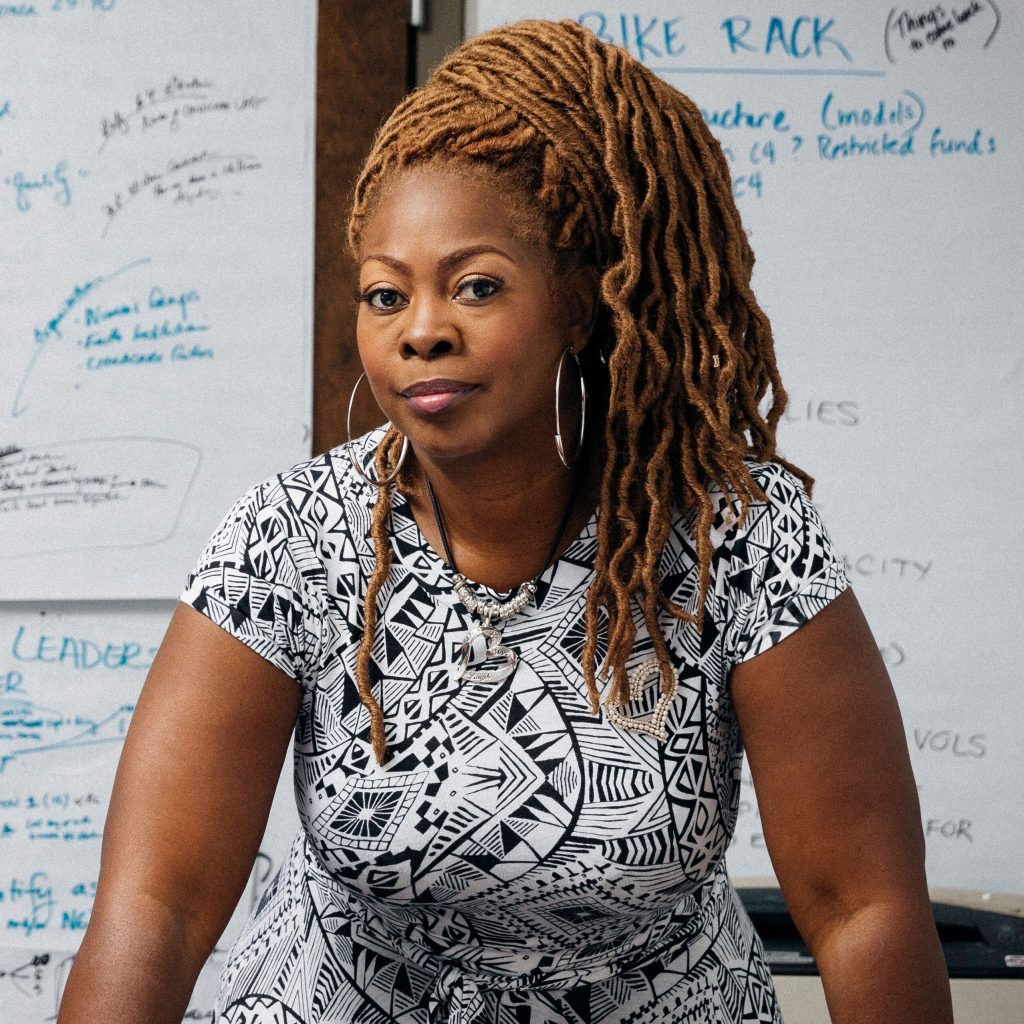How do we change the story of corrosive racial inequity? First, we have to understand the stories we tell ourselves. In this program, racial justice innovators john a. powell and Heather McGhee show how empathy, honesty and the recognition of our common humanity can change the story to bridge the racial divides tearing humanity and the Earth apart.
Featuring
- john a. powell is the Director of the Othering and Belonging Institute and Professor of Law, African American, and Ethnic Studies at UC Berkeley. His latest book is: Racing to Justice: Transforming our Concepts of Self and Other to Build an Inclusive Society.
- Heather McGhee, distinguished senior fellow and former president of Demos, is an award-winning thought leader on the national stage whose writing and research appear in numerous outlets, including The New York Times and The Nation. Her latest book is The Sum of Us: What Racism Costs Everyone and How We Can Prosper Together.
Credits
- Executive Producer: Kenny Ausubel
- Written by: Kenny Ausubel
- Senior Producer and Station Relations: Stephanie Welch
- Host and Consulting Producer: Neil Harvey
- Producer: Teo Grossman
- Program Engineer and Music Supervisor: Emily Harris
This is an episode of the Bioneers: Revolution from the Heart of Nature series. Visit the radio and podcast homepage to find out how to hear the program on your local station and how to subscribe to the podcast.
Subscribe to the Bioneers: Revolution from The Heart of Nature podcast
Transcript
NEIL HARVEY, HOST: George Lakoff, the author, cognitive activist and professor of linguistics at the University of California, says this:
“One of the fundamental findings of cognitive science is that people think in terms of frames and metaphors — conceptual structures. The frames are in the synapses of our brains — physically present in the form of neural circuitry. When the facts don’t fit the frames, the frames are kept and the facts ignored.”
In other words, forget prevailing on the facts or the science – on reason. It’s all about the story. Changing the story can change the world.
How do we change the story of corrosive racial inequity? First, we have to understand the stories we tell ourselves, says Professor john a. powell of UC Berkeley’s Othering and Belonging Institute. He’s an internationally recognized expert in the areas of civil rights, structural racism, housing, poverty and democracy. He is the author of “Racing to Justice: Transforming Our Concepts of Self and Other to Build an Inclusive Society.”
john a. powell spoke at a Bioneers conference…
john a. powell: There are always multiple narratives, and those narratives are competing. And most of the time we don’t realize and we don’t talk about them in terms of narratives. So we live in stories, and most of the time we live in stories unconsciously. So we don’t think, this is my story. And what we’re doing now which is sort of interesting, we’re consciously engaging stories, we’re consciously engaging narratives.
And narratives do a lot of things. They help us make meaning of the world. There are a lot of writings to suggest that people’s experience doesn’t belong to them until they can tell a story about it. There’s actually research suggesting that children do not have a sense of self until they have a story about the self.
Unfortunately, in the United States the dominant story it’s about the individual, is about working hard, is about basically moving towards meritocracy and if you don’t make it, it’s your fault. We just did some research with low-income people – white and black – which is interesting, and these are people who are really struggling – we found that whites were more likely to believe the story that if they weren’t making it, it was their fault, whereas the black poor was more – economically almost exactly the same – but they were more likely to believe there’s a flawed system.

HOST: In a culture of hyper-individualism, says john a. powell, we’re conditioned to take everything personally: It’s our own doing, our own responsibility. Although personal responsibility can be a high virtue, all of us are operating within larger systems that we didn’t create or choose, and that are often stacked to guide our narratives and behavior.
But why would white people and Black people hold such different perspectives on personal responsibility versus a rigged system? And equally important, who really benefits from that story – and from that system?
Heather McGhee designs and promotes solutions to inequality in the US. She is the author of the book The Sum of Us: What Racism Costs and How We can Prosper Together.
Since 2002, she has helped build the non-partisan “think and do” tank Demos and has had a profound influence on public policy – from landmark consumer protections to financial regulation, wage increases for low-paid workers, and democracy reforms.
She says the story of personal responsibility for racial inequity is embedded in a deliberate campaign of misdirection.
Heather McGhee spoke at a Bioneers conference.
HEATHER MCGHEE: There is a paradigm that is ascendant right now, which is a zero-sum paradigm of racial competition, or gender competition, or national origin competition, or even urban/rural competition. And the idea there is that when my group does well, it’s at the expense of your group, and if your group is doing well, it’s at my expense. And that group competition is always sort of lateral. [LAUGHS] It’s very rarely vertical. [LAUGHTER]
And of course that is the underlying narrative in the white nationalist – fear of demographic change, “you will not replace us”, “make America great again” by changing who is in power in America, make America great for white men again. All of that. The idea that is ascendant, and according to at least a couple of researchers, a majority idea that the most discrimination is now against white people, not people of color.
So I think this is controversial, but it seems to me important in terms of the aspiration for the we. When progressives and radicals talk about white supremacy and white privilege, we say that racism is a benefit, a material and psychological benefit to white people, as much as it is a cost and a harm to people of color. And there’s a—obviously a ton of economic evidence to show that, but if you think about it that way, it’s pretty hard to actually unlock that logic – racism is good for white people and bad for people of color – from the logic of the white nationalists, that say that progress for people of color is bad for white people.
And so I’m really interested in telling the many different stories that are there and have been there from the beginning of our country’s history and all across the world of when white supremacy was materially and psychologically and emotionally harmful to white people, when patriarchy has been harmful to men.
And there are so many examples, and it’s just not one of the stories that we have felt an interest in sharing, because there’s so much pain and trauma, and we still have to fight to be heard that racism exists and that white privilege exists. And yet what this current moment, this absurd political moment is really offering up is a very good example of when clinging to white supremacy has cost a white America because equity could be greater for all of us. [APPLAUSE]

HOST: Heather McGhee has long worked on issues around economic, racial and political inequality. Some of her earlier work with Demos focused on the issue of personal debt.
She says debt is a clear example of where shifting the narrative made pivotal differences in story and public policy. In particular, the campaign she directed redirected the notion of who the real culprit was in the crisis of rising personal debt.
HM: When I started working at Demos on the issue of credit card debt, it was 2002, and over the course of the 1990s, the volume of credit card debt in the country had tripled, with the highest increase coming among low-income households and elderly households. And yet this kind of crisis that had topped $1 trillion for the first time, this crisis – and of course there were payday loans as well, and people using their mortgages as credit cards – this crisis of mounting debt was not seen as an economic issue, it was seen as a personal finance issue. Right?
And so when we went and we did our media scan of the issue that we were going to work on, it was like all in the personal finance columns, and then there’d be some kind of USA Today regular-type of story, but it was about like bankruptcy or something like that, and it was always the culprit, the responsible one, was the borrower. And of course they weren’t responsible, they were irresponsible, and the word irresponsible came up all the time.
Debt is a serious and fascinating motif in our society, and phenomenon. But when you are trying to think about an economic story that has villains and victims, it’s a pretty powerful one.
So long story short, we spent the next 7 years working very hard, using research and storytelling to reframe the issue of debt among the people we decided had the power to do something about it – journalists and policymakers, particularly at the federal level.
And so the shift we wanted to make that I think we were pretty successful at was from people borrowing for frivolous expenses. I remember it was like DVDs which were new at the time, and sneakers was the coverage. To people borrowing for the little things in life, like healthcare and childcare and rent. [LAUGHTER] And, you know, we did a big household survey to show this – working and middle- class families – What are you putting on your credit cards? A carburetor. Right? Prescription drugs.
This was such a huge change, right? Tripled in the course of 10 years – we did need a culprit, and as it turned out, the deregulation of the credit card industry that had happened in the late 1970s, but really the practices changed in the late 1980s, had made it so that if you—once you got into debt, it was nearly impossible to get out, and your volumes of your debt was just growing and growing and growing.
So we were able to really shine a light on these tricks and traps, as our friend Elizabeth Warren says, and make the irresponsible people in the story, not the little lady counting out her prescription drugs, but the Wells Fargo bank and the Citibank that were making money hand over fist. And that switch was extremely important, and frankly one of the most moralized, moralistic sort of economic terrains that we have to paving the way for the Credit Card Act of 2009, which had a whole bunch of consumer protections that have saved borrowers over $50 billion in fees alone. [APPLAUSE]
HOST: Who benefitted from the tricks and traps of the personal debt crisis were the banks and credit card companies.
The efforts of Heather McGhee and Demos played a vital role in changing the story and led to policy and legal changes that saved people from the debt trap.
Then again, the stories people hold are complicated, nuanced and diverse. They turn on many factors including their situation in life, race, gender, the media they consume, and their own psychology.
So how do you break through the stories people hold, to open the space to allow a different way of seeing?
john a. powell says it starts with acknowledging and respecting people’s points of view.
Then again, it does not end there. It’s usually not so much an issue of bad apples as it is of a rotten apple barrel – the system itself.
JP: Taking a knee. Is taking a knee about disrespecting the flag or is it about respecting the flag and what this flag stands for in terms of equality and justice? [APPLAUSE]
Here’s another one. Charlottesville. Taking down the statue of Robert E. Lee. It’s like, Oh, you’re taking down our history. Robert E. Lee was a traitor. He fought to dis-unite the United States. So people who are fighting to take down those statues should be wrapping themselves in the flag. We believe in the United States. There are a lot of people who don’t.
Who’s the villain? The people who don’t believe in the United States. But this is the hard thing: There has to be a way for them back in. And so if there is someone who is culpable, it can’t be that they’re evil. And also just as a factual thing, systems are complex. There are people who are deliberately doing things that are evil. People who will deliberately kill millions of people, who help to call it out. But most people are not in that space.
Wells Fargo was the largest mortgage lender in the world. NAACP filed a suit against them. I negotiated with Wells Fargo. And we were coming out of a meeting, I was trying to get them to reset some loans and do a bunch of things. When you securitize these things, you put them in trusts, and the law says you can’t open it up. Blah, blah, blah. And so I’m talking to these Wells Fargo guys and I said: I don’t know how to open it up, but you do. You can open it up. And they look at me like, How’d you know that? [LAUGHTER]
And then we walk out and Ben Jealous says to me, “john, I don’t get it; you pushed these really hard, you all but call them racist, and they like you.” [LAUGHTER] And I say, “Yeah, and I like them too, but I’m pushing them because we need to do something.” And I said, “How do you feel about them?” He said, “I can’t stand them.”
The point I’m making is that that space where they felt –and they were trying. Right? It’s like I work for Wells Fargo, I’m the vice president of whatever it is, but I’m not an evil person. I’m sort of trapped, too, by these rules, by the laws, by the whatever. And I’m saying, You can push. You can push.
So I guess what I always say is that if the villain is personalized, we have to be extremely careful and provide a way back into the circle of human concern.
When we seriously engage in othering people, we actually diminish ourselves as well. So we may be more effective, and I know in politics you have to be concerned about being effective, but we also have to be concerned about our humanity.
HOST: When we return… more from john a. powell and Heather McGhee on how empathy, listening and respect can liberate everyone, and how changing the story leads to a vertical climb to systemic change. In other words, don’t take it too personally.
This is, “Why Equity is Good for Everyone: Changing the Story, Changing the World,” on the Bioneers: Revolution From the Heart of Nature.
Imagine for a moment trying to connect with someone coming from a radically different and offensive point of view. Then add racial prejudice to the mix. Then air the surprise interaction live on national TV.
That’s what Heather McGhee faced on C-SPAN in 2016 during the height of the racially charged Trump campaign.
HM: I’m on the show, and halfway through I get a call from a guy who identifies himself as Gary from North Carolina
GARY FROM NORTH CAROLINA ON C-SPAN: Yes, good morning. I was hoping your guest could help me change my mind about some things. I’m a white male and I am prejudiced. The reason it is, something I wasn’t taught but it’s something that I learned. When I open up the papers I get discouraged at what young black males are doing to each other, the crime rates and it’s a deep issue that goes beyond that…
HM: You know so I’m listening and again it’s like this closeup on my face as I’m hearing this, right? So I’m like hmmm [LAUGHTER] And then he says, but I want to change. And I want to know what your guest can do to help me become a better American. [AUDIENCE RESPONDS] So, you know, my heart’s like in my throat, and this is all live television. And this really kind of snarky host was like, “Heather?” [LAUGHTER] But you know, you don’t really have time to think in this moment, so I said the first thing that came to my mind, which was, Thank you. Thank you for being honest, because being honest about your bias is one of the most powerful things that you can do in this moment.
And then I went on to very much off the top of my head give him some ideas about what he could do to basically de-bias his life, to integrate his life.
HEATHER MCGHEE ON C-SPAN: So what can you do? Get to know black families who are not all, not even any majority are involved in crime and gangs. Turn off the news at night because we know that actually nightly news and many media markets that have been studied actually over represents African-American crime and under represents crimes that happen by white people…
HM: I said, read about the history of African Americans in this country. I could tell he had like a white/black paradigm going. Foster conversation in your community about these issues.
And then that was it. Right? Because then it goes onto the next caller. And I went on to the next call and stepped off the set, and one of my coworkers in our communications team said, That was a really powerful exchange; we should put it on Facebook. I said, yeah, sure.
And so it went on Facebook on Saturday, and by Monday it had a million views. And Demos’ social media is like charts and graphs, and it does not usually get a million views, but this one did. It just had this life of its own.
And then there were articles about it in local news stories. And it was just one of those like positive stories that people just couldn’t get enough of, because this was a really—this was August of the Trump campaign summer. Right? And this—You know, Donald Trump is going—coming down those golden stairs and saying Mexicans are rapists and criminals, and then saying, I’m not a racist. [LAUGHTER] And here was this sort of white every man saying, I’m prejudiced and I want to change.
And then I, a black woman on TV – that’s how I was identified: Black woman gives amazing answer to racist caller. [LAUGHTER] And I didn’t bite his head off. I wasn’t an angry black woman. I spoke with empathy that I honestly felt. Right? It wasn’t an act.
But so long story short, I will tell you the end of this story, which is that Gary from North Carolina went on Twitter to find me, because this is—It was in his local newspaper now, this story about the prejudiced guy from North Carolina. [LAUGHTER] I just have this image of him opening up his paper and like – [LAUGHTER]
He calls me, and he says – this was about a week later – He says, I went to a black church on Sunday, [AUDIENCE RESPONDS] and I went to the bookstore and I got all these African American studies books, and I told the girl at the checkout that I was trying to become less prejudiced. [LAUGHTER] And he has actually gone on what he calls this walk.
And I know Gary now. I’ve met him. I would actually—I’ve hung out with him probably half a dozen times over the course of the past 18 months, and I can honestly consider him a friend. And it’s pretty amazing to see how much a moment of empathy can just be an invitation.
He’s done all the work. Like I’m not saving this guy. I have other things to do. [LAUGHTER] But it was an invitation, and he answered it, and it was just the right moment, the right time in his life, and he’s now really committed to being an anti-racist, and to bringing other people along. [APPLAUSE]
HOST: But unlike Gary, not all such interactions take place in a space of honesty, empathy and openness. How do you create a basis to find common ground when people’s viewpoints and stories are closed and hostile?
Again, john a. powell…
JP: I was asked to go down and speak in Alabama to a bunch of community folks who were—questions about the Affordable Care Act. And it was—300 people in the room, all white, I think all Republican, almost all working class. And before I went out to talk to them, my host said, We should tell you, we had someone coming in last week to talk about some of these same issues about the Affordable Care Act and race, and they got booed off the stage. So good luck.
So I went out there, again, people were completely closed, and I was talking about the Affordable Care Act and race. And I asked– started asking a series of questions. I said, How many of you in the audience – just sort of stand you up if someone in your family lost their insurance because they lost their job? Some people stood up. I said, keep standing. And how many of you had some procedure denied because the insurance company – after your doctor prescribed it – said they weren’t going to pay for it? I asked like two more questions. By now, everybody’s standing up. Right? And I said, Well how does that make you feel? They were—And they used a lot of colorful words. [LAUGHTER] And I said, The insurance companies shouldn’t be deciding your life. And that’s what the Affordable Care Act is trying to fix… Yeah.
And as bad as it is in your community, it’s worse in the black and Latino community. I didn’t lose one person. So part of what I did in terms of empathetic listening and engagement is I got their suffering into the conversation.
HOST: At the same time, says john a. powell, establishing a respectful personal connection can be the first step toward that vertical view.
JP: After the four or five police got killed I think in Dallas or someplace, I was walking in New York. This was 6:00 at night. It was dusk. And there were these four burly police in New York. They’re just chatting each other up, and I see them and I start walking over toward them. And the people milling around – this was in Union Square. And as I get close to them, the chattering starts slowing down, and then pretty soon all eyes are fixed on me. It’s like…And here’s this old black man walking up against these 4 white guys with guns and billy club and radios, and it’s like they’re afraid. I mean, they clearly are afraid. And I walk up to them and I say, Oh, good evening. I just want to say I really appreciate you trying to keep us safe. We had a conversation then. And literally one guy says, Who are you anyway? [LAUGHTER] And they said, Do you have a card? Do you ever come to New York? [LAUGHTER]
Now, in that moment, right, I had recognized their humanity. But it’s just not horizontal. Their relationship with the community is vertical. So there—They wanted their humanity acknowledged, but they’re still in a vertical position.
And so part of that has to become part of the story. And I do a lot of work with police departments, and one of the flaws is how do you help the police become better people. And that’s always a good goal, but they’re in a system that’s incredibly corrupt. And you put a black police in that system, a white police in that system, a woman in that system, and they get corrupted by the system.
So part of it is really to make the system itself support our collective belonging. We can’t do all the work at the interpersonal level. And we have systems and structures that make it almost impossible for us to see each other as human beings.
And there’s a lot of stuff we can build on and stories that we can tell and narratives, but unless we also tell a narrative about the system and how the system is tearing us apart, even as we try to be together, I think we can’t build a circle where we all belong.

